The softest form of rock is lava. It’s hot and fiery and dangerous.
Soft Rock, the music genre, is none of those things.

It’s catchy, though.
And those earworm melodies will fill your brain and stay there until the end of your days.
Given the chance, lava would do the same thing. Just ask the Pompeiians.

There has always been “soft” music.

Whether it’s Medieval sacred music…

Or Debussy’s piano pieces…

Or the crooning of the 1940s.
There was softer music even in the heady Rock & Roll of the British Invasion. Even on their first album, The Beatles got mellow with songs like “Anna (Go To Him)” and “P.S. I Love You.” Sometimes you’ve just got to rock, but softly.
So gentle music was nothing new. However, though The Beatles, Buddy Holly, The Rolling Stones, and all the other Rock & Rollers had the occasional ballad, the early 1970s saw a wave of musicians specializing in soft pop music, and nothing else.

These artists combined the quieter vibe of Rock & Roll, the Folk and singer-songwriter movements of the period, and the instrumentation and musicianship of Easy Listening.
The Beatles graceful “Here, There And Everywhere” and The Bee Gees’ “To Love Somebody” aren’t all that different from Bob Dylan’s “Where Have All The Flowers Gone” or Peter, Paul & Mary’s “Leaving On A Jet Plane.” This intersection of Rock & Roll’s softer side with the Folk revival is the origin of Soft Rock.
With its mellow melodies, smooth vocals, and gentle instrumentation, Soft Rock appealed to a young and old alike.

They were attracted to its accessible and relatable lyrics – which were almost always about love – pianos and acoustic guitars, and its catchy hooks.
Even fans of the widely popular, instrumental Easy Listening caught on to this soft vocal Pop music.
The Laurel Canyon section of Los Angeles became ground zero for the late 60s counterculture.

Rock and Folk musicians took up residence there, including Carole King, James Taylor, The Mamas & the Papas, Joni Mitchell, The Byrds, Neil Young, Jackson Browne, Harry Nilsson, Gram Parsons, Linda Ronstadt, some of The Eagles, and some of The Beach Boys.
Carole King was already an established musician. She had released her first single, “The Right Girl,” in 1958, but was better known as part of a songwriting team with her husband, Gerry Goffin.

They wrote multiple hit songs, including “Will You Love Me Tomorrow?” and “(You Make Me Feel Like) A Natural Woman.”
Following their divorce, King moved to Laurel Canyon to pursue a solo career. Her first album, Writer, got to #84 on the album chart, which is respectable but not fantastic. The 1971 follow up album was, indeed, fantastic.
Tapestry was #1 for fifteen weeks.

Its first single, “It’s Too Late,” was #1 for five weeks. It should probably be considered a double A-side single because the flip side, “I Feel The Earth Move,” got significant airplay at the same time.
A second single, “So Far Away,” got to #14. The album and singles won four Grammys, and to date Tapestry has sold over 25 million copies.
One of the session guitar players on the Tapestry sessions was singer/songwriter James Taylor. He liked a song he played on, “You’ve Got A Friend,” so much that he recorded his own version. It reached #1 in the same month that “It’s Too Late” slipped out of that spot.
Taylor came from a musical family.

His mother sang opera and each of his siblings, Alex, Kate, Livingston, and Hugh, had their own music careers and relaxed, conversational singing styles.
James met guitarist Danny Kortchmar (who would become a LA session musician and part of the Laurel Canyon scene) in Massachusetts,and the two moved to New York City to form a band.

They called themselves The Flying Machine and had local success, but Taylor developed a problem with heroin. The band broke up and he went to live with his parents while he cleaned up.
Taylor then moved to London to work as a solo act, and his friend Kortchmar connected him with Peter Asher at Apple Records. Asher liked Taylor’s demo tape and played it for The Beatles. They liked it, too, and released his self-titled debut album as 1968 turned into 1969.

The album got good reviews but didn’t sell well, in part because Taylor was unable to promote the album by touring. His drug problems had rekindled and he checked himself into a rehab hospital in Massachusetts.
After release, he began playing shows again, but then broke both hands and both feet in a motorcycle accident. Broken hands can be the end of a guitarist’s career, but he fully recovered. While recuperating, he wrote a lot of the songs for his second album, Sweet Baby James.

The popularity of its two singles, “Fire And Rain” and “Country Road,” was enough that a single from the first album, “Carolina In My Mind,” reappeared on the charts and made it to #67, fifty-one positions higher than on its first release.
As influential as these Laurel Canyon singer/songwriters were, they weren’t really Soft Rock yet.

Songs that documented emotional distance, as in King’s “So Far Away,” or addiction and a friend’s suicide, as in Taylor’s “Fire And Rain,” were strange creatures on happy AM radio. But they set the stage for Soft Rock yet to come.
With the gradual evolution of Rock & Roll, Folk and Easy Listening into a single new genre, it’s hard to say who the first real Soft Rock artist was.
A lot of people think it’s The Carpenters: A brother and sister duo with keyboardist/composer Richard Carpenter and singer/drummer Karen Carpenter.

Karen’s smooth vocals and Richard’s sophisticated arrangements gained accolades from critics and audiences alike.
The Carpenters were from the Los Angeles area but weren’t part of the Laurel Canyon scene. After starting out as a Jazz instrumental trio with bassist Wes Jacobs, they discovered Karen could sing – and sing well.
Several record deals fell through, but they finally signed with A&M.

Their third single, 1970’s “(They Long To Be) Close to You,” was written years earlier by Burt Bacharach and Hal David and originally recorded by actor Richard Chamberlain.
Richard Carpenter’s arrangement is a great example of the Soft Rock sound with its lush orchestration, gentle vocals, and romantic tone. The song spent four weeks at #1 on the Billboard Hot 100. Its success helped propel The Carpenters to global fame and established them as pioneers of the genre. Their influence can be heard in the work of countless artists and bands that followed, making them early trailblazers of Soft Rock.
The Carpenters had another sixteen Top 40 hits and six platinum albums. Their clean-cut image, which A&M had a lot to do with, was part of their success, as it differentiated them from the long haired rockers of the day.

Conservative President Richard M. Nixon was a fan and called them “young America at its best.” That sort of endorsement reduces your cool factor to nearly null.
Both Richard and Karen disliked the lily white personas A&M gave them. As with Nixon, things were different behind the image. Richard became addicted to the Quaaludes and Karen developed an eating disorder. Both sought treatment.

Richard kicked his addiction but anorexia nervosa killed Karen at the age of 33. For most Americans, it was the first time they heard of the disease.
The success of these artists gelled Soft Rock into a distinct genre.

It uses lush orchestrations, emphasizes melody more than rhythm, and it specializes in love songs. There’s very little aggression.
While it’s almost always pristinely recorded, sometimes a little grit comes through. You can hear this in some Fleetwood Mac songs.
Bands like Fleetwood Mac, Chicago, and Bread blended Rock, Folk, and even Jazz with the mellow singer-songwriter approach.
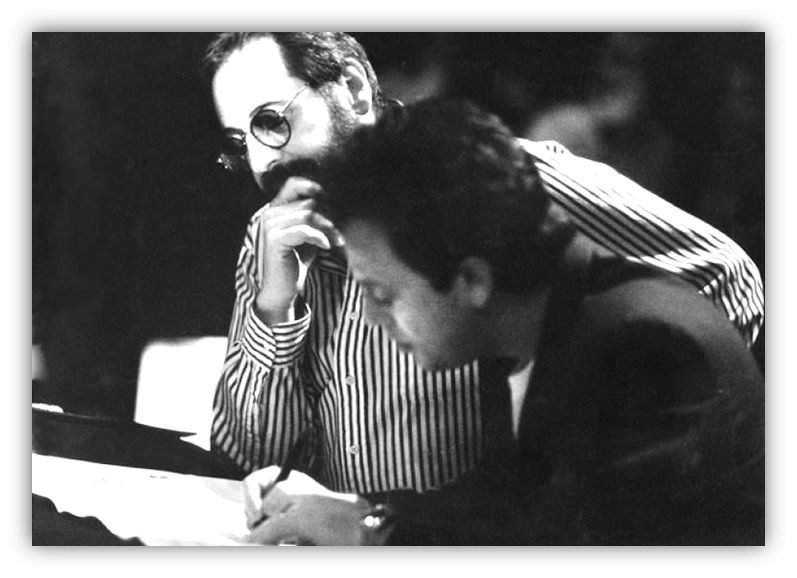
Producers like David Foster and Phil Ramone helped shape Soft Rock’s sound, using layered harmonies and string sections to create a rich atmosphere. And this atmosphere appealed to a whole lot of the listening public.
Throughout the 1970s, Soft Rock continued to flourish, with artists like Taylor, King, and Cat Stevens dominating the airwaves. At their best, singer-songwriters crafted introspective and emotionally empathetic songs about love and heartbreak with sensitivity and depth. There were a fair number of cheesy copycats, but the best Soft Rock songs are the ones we remember.
Soft Rock’s success attracted artists from other genres.
- Lionel Richie came from The Commodores, a Funk band, but his solo material was significantly less funky.
- Eric Clapton was the god of guitarists, having been in Cream, the first power trio, and Derek & The Dominos, a heavy Blues band.

But after he kicked his heroin habit, he went mellow. Songs like “Wonderful Tonight” and “Lay Down Sally” disappointed his early fans but garnered millions of new ones.
- Christopher Cross had been known in the Austin scene as a guitarist.

He once filled in on guitar for Heavy Metal band Deep Purple when Richie Blackmore became too sick to play. But the world knows him as a singer and songwriter, with hits like “Sailing” and “Arthur’s Theme (Best That You Can Do).”
Cross once joked that he wasn’t good looking enough to be on MTV. But MTV didn’t play much Soft Rock anyway. By the time they hit cable TV in the 1980s, Soft Rock was seen as your parents’ music.
That wasn’t the end of Soft Rock, of course. Rock bands who could lighten their sound and still look good in videos did well. REO Speedwagon, Toto, and Journey all had Soft Rock hits that weren’t much like their earlier material. It’s a long way from “Riding The Storm Out” to “Keep On Loving You.”
Having said that, Soft Rock took up fewer spaces in the Top 40, starting in about 1983.
Its influence continues into the 90s and 2000s.

Artists like Celine Dion, Sheryl Crow, Matchbox Twenty, Coldplay, and James Blunt carrying on the tradition of melodic and, at least somewhat, introspective songwriting.
The genre may have evolved over time, but its core elements of accessibility, emotion, and craftsmanship are still there.
It’s easy to dismiss Soft Rock musicians as milquetoast, or even craven hucksters. Some probably are, but the best are every bit as artistic as the great American Songbook composers.
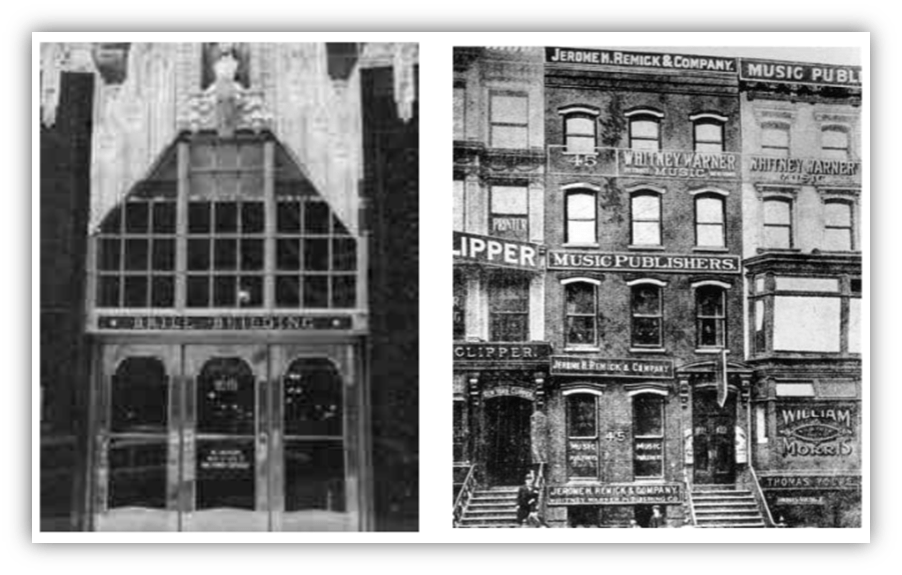
We can even make the case that Soft Rock songwriting is a continuation of the Tin Pan Alley and Brill Building tradition…

…, with perhaps a little more Laurel Canyon self-examination thrown in..
As long as listeners seek solace, intimacy, and good melodies, there will be Soft Rock.
Or at least there will be whatever shape the Soft Rock takes as it flows like lava into the future of music.
Suggested Listening – Full YouTube Playlist

Fire And Rain
James Taylor
1970

(They Long To Be) Close to You
The Carpenters
1970

So Far Away
Carole King
1971

Make It With You
Bread
1970
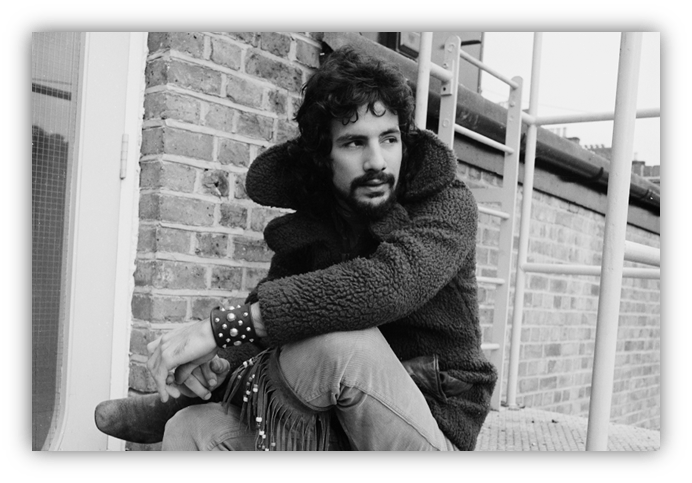
Wild World
Cat Stevens
1971

Tiny Dancer
Elton John
1972

Take It To The Limit
Eagles
1975
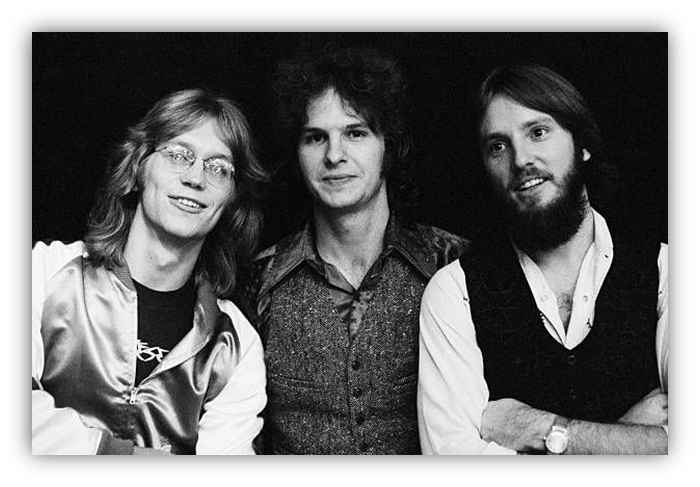
Sister Golden Hair
America
1975

Rhiannon
Fleetwood Mac
1976

Year Of The Cat
Al Stewart
1976

Wonderful Tonight
Eric Clapton
1977

Just The Way You Are
Billy Joel
1977

Baby Come Back
Player
1977

Slip Slidin’ Away
Paul Simon
1977

I Will Be In Love With You
Livingston Taylor
1978

Right Down The Line
Gerry Rafferty
1978

Minute By Minute
The Doobie Brothers
1978

Sailing
Christopher Cross
1979

Keep On Loving You
REO Speedwagon
1980

All Out Of Love
Air Supply
1980
Let the author know that you liked their article with a “Green Thumb” Upvote!




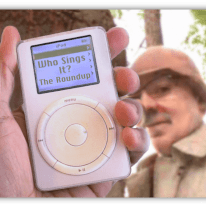
You’re singing my songs this time, Bill. (But then you knew Link and I would eat this up.)
Speaking only for me, I find the genre’s earnestness and straightforwardness a feature, not a bug. I prefer to have declarations of love delivered up front rather than through veneers of irony, bitterness, etc. But I know that’s a personal preference, not universal, and it has its limits. I love my cats, but I doubt I’d enjoy a song called “I Love My Cats.” (To that end, “Shannon” is not my thing, though I know some folks who are gutted by it.)
Great kickoff to a Friday!
It’s like I’m listening to 1982 WENS again…
The question is how far you can go in this direction and still be considered “Rock”. Not many people consider James Taylor or the Carpenters to be Rock acts, not even Soft Rock acts.
I think soft rock as a radio format has included all of these things, so it makes sense from a programming standpoint. Outside of that, I’m not so sure. I know my brain does not equate Fleetwood Mac and Air Supply together under one umbrella.
It’s a big umbrella.
Still, James Taylor started with the Beatles’ backing, and the Carpenters, with a Beatles remake, so …
Beyonce’s new album has a Beatles cover. Nobody considers her a rock act nor is Cowboy Carter being called a rock album.
Can I just say that Paul Anka raining down death and destruction on the ancient city of Pompeii made my day, and possibly my year?
mt58, you were truly on fire with your visual embellishments today!
Wow!!! I hadn’t pieced together this taxonomy, but now that I see it laid our before me (wonderful job as always V-dog), I feel a strong sense of ambivalence. Not in the sense of apathy but in the true meaning of the word: strong feelings in both directions.
I absolutely adore Carole King, the Carpenters, Gerry Rafferty and Yusuf Islam (fka Cat Stevens). And I absolutely detest the Eagles, Eric Clapton, Air Supply and post-Commodores Lionel Richie. It seems improbable that artists that move me and artists that make me recoil come from the same musical lineage. And here we are.
I suspect the difference is in sincerity. You could tell Carole King was singing from experience, Yusuf Islam from deeply felt beliefs, the Carpenters from the pain Richard and Karen were living through while in the spotlight. And on the other side, the Eagles, Clapton and Lionel were like “cha-ching!!!” They made a lot of money peddling tripe that they knew was tripe.
Granted I didn’t think through this in my instinctive assessment of these artists. But in retrospect, I think this explains what I feel. I can’t stand phonies trying to imitate sincerity. But genuine sincerity has me at Hello.
I think there’s room in the examples you cite to see artists’ trajectories, even if those move from the heartfelt to the slick (and in the case of the Eagles and Clapton, it’s hard to tell exactly where the lines were crossed). You yourself do this with “post-Commodores” Lionel Richie, recognizing that “Sweet Love” and “Easy” somehow register differently than “Endless Love” and “Hello.”
I don’t consider the latter work as tripe but more as commercially slick. It has that veneer of production and familiarity that can breed some folks’ contempt. Think Genesis’ “In Too Deep.” I love that song but I’m sure it drives fans of the prog-rock version of Genesis up the wall.
Maybe tripe is the wrong word and I’m being too harsh. But those artists are definitely “not my bag…” Maybe I’m just post ex facto justifying my gut feelings…
I like “In Too Deep” too, so I’m not sure commercial slickness is the main culprit. I really do feel like Karen Carpenter is singing from a deep well of hidden emotion. And I really feel like “Hello” et al are shameless cash-ins. But I’m on the fence about several of these artists. Used to hate James Taylor but I’ve warmed up to him as I’ve grown older.
As soon as I saw the title, I knew Bread had to be there. And they were!
Softastic baby!
Nom-nom-nom…delicious! When I think of soft rock, the artists that first come to mind are bread and The Carpenters and England Dan and John Ford Coley. By the time I was entering college in 1988, I knew that I liked this stuff more than my average male peer. And I was ok with that. I cite my many hours as a single digit aged child listening to MOR AM radio in the 70s as a foundation of my love of this type of music. Luckily, a lot of it isn’t just bland, formulaic ballads. Some of it includes really creative musicianship. I think of quality work on songs like “Help Me” by Joni Mitchell or “Midnight at the Oasis” by Maria Muldaur or “Just You ‘n’ Me” by Chicago. But for every one of those songs there’s sappier, simpler Air Supply or “Feelings” by Albert Morris, which are ok, but not as beloved by me.
Thanks for the article! I knew all but one of your song suggestions today! (Who is Livingston Taylor? I didn’t remember that one.)
He’s James’ brother. Their sister Kate has done some good stuff, too.
Link: I’m surprised you don’t know “I Will Be in Love With You.” But, then, maybe I know it more because it made AT40. It and “First Time Love” are great songs of his. (I also love his work with sister-in-law Carly Simon.)
As a heading; soft rock, is pretty off-putting to me but the reality is a lot more nuanced. There’s plenty that I’d change channels to avoid like Bread, Air Supply and Wonderful Tonight but there’s plenty that you mention like Wild World, Tiny Dancer and Slip Slidin’ Away that are great songs.
Excellent stuff as ever.
Nearly lost my mind when I stumbled upon Kate Taylor singing the future theme for the Gilmore Girls(“Where You Lead”). And that James Taylor had a performing sister.
I want to hear Nick Cave cover “Fire and Rain”. “The Mercy Seat” reminds me of the “fire” part in “Fire and Rain”.
“Fire and Rain” is showcased in Running on Empty to great effect. It’s exactly what a Weather Underground-like couple on the run would listen to.
“Sailing” is post-cool. Love that song. Only Brian Wilson would think of pairing the artist formerly known as Terrence Trent D’Arby and Christopher Cross as backup singers.
From emo to soft-rock: Great stuff V-dog.
Like Link and rb, I thought a lot about this today in terms of radio stations. There’s definitely been a big evolution here. (Ozmoe can certainly weigh in since he literally wrote the book on it.)
In Chicago terms, soft rock listeners in the mid- to late ’70s had their pick of WBBM-FM or WLAK, not to mention a number of smaller suburban stations like WYEN. WBBM-FM would have played the Eagles’ “One of These Nights” or “Hotel California” and Fleetwood Mac’s “Go Your Own Way.” WLAK would not have; those guitar solos and bridges would have just been too loud for them. (They were very close to Muzak back then.) So, you might have heard “Best of My Love” or “Dreams” but not their louder siblings. By the ’80s WBBM-FM became a Hot Hits station, B96, and then moved more into an urban/dance mix at one point. WLAK changed call letters and vacillated between softer AC and adult Top 40.
Thanks to the all the commenters today. I’m on a road trip and was only able to participate at rest areas. I’m not surprised to see varied opinions of what is and what isn’t Soft Rock. It’s a big category and there’s bound to be disagreements. Thanks, everyone, for chiming in! I love seeing your thoughts.
V-Dog, great article as always!
Pauly captured some of my thoughts here as well – I either LOVE or HATE these artists. Air Supply? YEECH. America? AWESOME! Bread? OOF. Carole King’s Tapestry? NOM NOM NOM.
If I were to go to a therapist, I’m pretty sure my parents would be a part of explaining the differences – the bands they liked I swore off, and ones I discovered on my own I found to my liking.
I also will always disagree with Tom’s score for “Sister Golden Hair”: it is a 10/10.
I’m currently living in a world (i.e., an office) in which the person in the desk behind me plays CSN ‘Southern Cross’ multiple times per week. Also, Al Stewart’s ‘Time Passages’ and LRB’s ‘Take It Easy on Me.’ I am not enjoying my soft rock experience right now.
Great read, Bill!
I like all three of those songs. But a steady diet of them (or anything) would burn me out on them pretty quickly.
I’m coming in late here, but I wanted to give links to Jonathan Coulton’s song “Soft Rocked by Me”
https://youtu.be/Pzn8Tz9SpCA?si=XbygNFa0-8Pr9Lm_
And then his completely sincere album of Soft Rock covers, Some Guys
https://youtu.be/YAT0UAseWh4?si=i7iCCmjs8BqTZ2yR
His goal with Some Guys was to replicate the songs as perfectly as possible, given modern recording technology and the talent he had at his disposal.